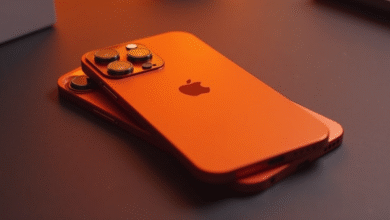Transparent Smartphones: Are They the Future of Tech?

Imagine a world where transparent smartphones redefine our interaction with technology. These futuristic devices, made possible by advancements in transparent technology, are poised to revolutionize how we perceive and use mobile devices. With the integration of OLED technology, transparent displays are becoming a tangible reality, showcasing vibrant, clear images while maintaining an ethereal quality that makes them visually stunning. Although we’ve only glimpsed the potential of transparent LED screens in devices like laptops, the burgeoning interest in the future of smartphones suggests that the concept of seeing through our gadgets may not be as far-fetched as it seems. As we explore this exciting frontier, it’s clear that transparent smartphones may soon transform our daily lives in unexpected ways.
In the landscape of modern gadgets, the idea of translucent mobile devices is gaining traction among tech enthusiasts. Often referred to as crystal-clear communicators, these innovative tools highlight the potential of see-through interfaces that not only captivate the eye but also enhance functionality. By leveraging advanced display technology, such as organic light-emitting diodes (OLEDs), designers aim to blend aesthetics with practicality. Imagine wielding a digital companion that merges seamlessly with your environment while offering a unique interactive experience. As transparent screens continue to evolve, the question arises: how will these remarkable devices fit into our fast-paced, tech-driven lives?
Understanding Transparent Display Technology
Transparent display technology represents a significant innovation within the tech industry. Traditionally, we’ve relied on opaque LCD displays or OLED technology to interact with our devices. However, recent advancements in transparent LED screens are capturing the attention of consumers and tech enthusiasts alike. This technology utilizes transparent substrates that allow both visibility and imaging, bringing a fascinating twist to how we think about displays. With patents and prototypes surfacing from companies exploring transparent technology, there is an ongoing dialogue about its feasibility and applications.
At events like Mobile World Congress, innovations in transparent technology have left us excited about future possibilities. Displays that can function seamlessly while maintaining transparency enable new design paradigms for smartphones and other devices. The incorporation of OLED and LED technologies is paving the way for bright, colorful visuals that don’t detract from the surroundings, merging the physical environment with digital interfaces. As we delve deeper into the capabilities of transparent screens, we foresee applications in various fields, from advertising to consumer electronics.
Practical Challenges of Transparent Smartphones
While the allure of transparent smartphones is undeniable, the practicality of such a device raises several concerns. Firstly, there is the issue of privacy; a transparent screen may expose user content to anyone standing behind you. This deters many from accepting the concept, as security can be compromised easily. Moreover, the ambient distractions provided by transparency could hamper focus when trying to interact with a device, leading to inadvertent mistakes or miscommunication.
Secondly, the entire ecosystem within smartphones necessitates transparency as well. Features like batteries, processors, and circuit boards would need to be redesigned with transparent materials, which poses considerable engineering challenges. Although experimental device designs have demonstrated the integration of transparent technology, a consumer-ready smartphone exists primarily as a novelty at this stage rather than a commercially viable product. Thus, reimagining a smartphone as entirely transparent invites a critical evaluation of priorities: can aesthetics outweigh functionality?
The Future of Smartphones: Transparent Technology
Imagining a future filled with transparent smartphones blends excitement with skepticism. As manufacturers iterate on designs and technology, the potential of transparent LED displays becomes more apparent; however, concerns about their practicality persist. Could the next generation of devices integrate transparent screens while maintaining or enhancing user experience? The future of smartphones could be shaped by how effectively we leverage advancements in OLED technology and transparent displays to meet real-world needs while creating an engaging visual experience.
Additionally, potential applications for transparent technology extend beyond smartphones into areas like augmented reality and smart glasses. As the lines between physical and digital realities blur, transparent smartphones may evolve alongside these technologies to create immersive interfaces that adapt to our surroundings. As companies consider how to merge transparency, functionality, and user safety, we can expect gradual yet transformative advances that could indeed redefine our interactions with technology.
Innovative Applications of Transparent Screens
The applications of transparent LED screens are vast and varied, going far beyond the confines of smartphones. One noteworthy implementation can be found in urban environments, where transparency enhances information dissemination. For instance, subway systems in cities like Shenzhen are experimenting with transparent displays that provide real-time transit information while also functioning as advertisements. This innovation effectively marries utility and technology in a captivating manner.
Another fascinating potential lies in how these transparent displays could redefine our living spaces. Imagine your windows transforming into informative displays that relay weather updates or allow for interactive visual entertainment. When the screens are not displaying vital information, they could seamlessly switch to become beautiful, transparent panes. Innovations in transparent technology promise not only to revolutionize advertising and interactions but also integrate into our lives more holistically, addressing both aesthetic and functional needs.
Conclusion: The Viability of Transparent Smartphones
In conclusion, while the concept of transparent smartphones is innovative and enticing, significant concerns must be addressed before they can become commonplace. The ongoing advancements in transparent LED technology signal a transformative era for consumer electronics, yet the practical aspects of privacy and functionality remain critical steps to overcome. Will manufacturers prioritize the feasibility of such devices to make transparent smartphones a reality, or will it remain a futuristic dream?
The dialogues surrounding transparent technology highlight the balance between cutting-edge design and practical usability. Engaging users with transparent smartphones might lead to fresh innovation paths, derailing conventional smartphone expectations and using OLED technology in impactful ways. Though we may not see transparent smartphones soon, the journey towards that goal is undoubtedly paving the way for more innovative displays across various sectors.
Transparent Technology in Everyday Life
As transparent technology progresses, its potential for everyday applications becomes more tangible. For instance, retail spaces could utilize transparent displays to enhance customer experience without obstructing views of the products. Advertising campaigns could rely on transparent LED screens, allowing brands to merge seamlessly into their surroundings, providing exclusive information without the need for traditional signage.
Moreover, as homes continue integrating smart technology, the impact of transparent displays will likely redefine how we perceive living spaces. Smart windows that change visibility based on the user’s preference, easing privacy concerns while still providing valuable digital insights, could become commonplace. Innovations in transparent technology are not just shaping devices but are also laying the groundwork for a more integrated and interactive life.
Exploring the Science Behind Transparent Displays
To appreciate the possibilities of transparent displays, it’s essential to understand the science behind them. Transparent screens utilize a combination of light-emitting diodes and special substrates that allow light to pass through while displaying images. The creation of truly transparent devices begins at the microscopic level, where engineers manipulate electronic components to maintain visibility without sacrificing quality.
As the science advances, the materials become thinner, lighter, and more efficient. Technologies like OLED have opened new doors for achieving vibrant colors and high resolution, making the concept of transparent smartphones increasingly feasible. Researchers are continuously exploring how to enhance performance and durability, aiming for a balance between aesthetic appeal and the practical demands of everyday use.
Consumer Interest in Transparent Smartphones
Despite several challenges facing transparent smartphone technology, consumer interest remains high. Tech enthusiasts are particularly drawn to the concept, envisioning a future where devices become more integrated with the environment. This consumer enthusiasm can influence manufacturers to prioritize the development of innovative designs, encouraging researchers and developers to refine transparent technology further.
Even as companies release incremental updates and concepts for transparent devices, the anticipation creates buzz within tech communities and potential users eager for the next big thing. Market curiosity might be the driving force behind future innovations, encouraging brands to investigate the possibilities of transparency within their product lines, which could ultimately lead to viable consumer-ready technologies.
The Role of Transparent Displays in Advertising
Transparent displays are set to transform advertising in remarkable ways, providing a platform for dynamic engagements that capture audience attention. Imagine walking through a shopping district where storefront windows showcase vibrant advertisements without obstructing the view of the products behind them. This interactive element not only entices customers but also enhances the overall shopping experience, merging marketing with practicality and aesthetics.
Furthermore, the adaptability of transparent LED screens allows businesses to switch between static advertising and dynamic content in real time. This aspect enhances personalization, allowing retailers to tailor messages according to audiences’ preferences or shopping behaviors. As more brands recognize the impact of such transparent technology, we can expect a shift in advertising models, reinforcing the value and visibility of transparent displays in daily commerce.
Frequently Asked Questions
What are transparent smartphones and how do they utilize transparent technology?
Transparent smartphones are innovative devices that incorporate transparent technology, allowing users to see through the display when it’s not actively used. This technology primarily relies on advances in transparent LED screens and OLED technology, which enable displays to emit light while also allowing ambient light to penetrate, creating a unique viewing experience.
How does transparent display technology work in smartphones?
Transparent display technology in smartphones uses transparent OLED panels that emit light while maintaining a degree of transparency. When activated, they can create vibrant images and videos, but when turned off, they allow visibility of the background, thanks to transparent anodes and ultra-thin connections between diodes.
Are transparent smartphones practical for everyday use?
While the concept of transparent smartphones is exciting, practical use poses challenges. Transparency could lead to distractions from behind the display, as well as privacy concerns, since others could see what’s on your screen. Moreover, other components like batteries and circuit boards would also need to be transparent, complicating design and functionality.
What are the potential applications for transparent LED screens beyond smartphones?
Transparent LED screens have vast applications beyond smartphones, including advertising displays in public transportation, interactive windows in homes that can show useful information or transform into a home theater, and smart car windshields that display navigation and safety information.
Will transparent smartphones be the future of smartphones?
While transparent smartphones showcase fascinating technology, their future remains uncertain. The novelty factor is intriguing, but practical limitations and privacy issues may hinder widespread adoption. However, as transparent technology evolves, we might see niche applications or limited-edition models that appeal to technology enthusiasts.
What challenges does transparent technology face in smartphone development?
The development of transparent smartphones faces several challenges, including technical feasibility, cost of production, issues with display clarity when transparent, and ensuring that all internal components can also be made transparent without compromising battery life and performance.
How does OLED technology contribute to the functionality of transparent displays?
OLED technology enhances the functionality of transparent displays by allowing diodes to emit colors at high intensity while maintaining transparency. This capability is essential for creating vibrant images on transparent smartphones, making them visually appealing and functional.
| Key Point | Description |
|---|---|
| Transparent LED Technology | A technology that allows displays to be see-through while still showcasing images, made possible by transparent diodes. |
| Advancements in Displays | Recent developments have made it possible to create laptops with transparent screens, indicating potential for smartphones. |
| Practicality Concerns | Transparent smartphones may face challenges such as privacy issues, distractions, and the need for transparent internal components. |
| Potential Applications | Applications for transparent displays could include advertising on subway windows and interactive car windshields. |
| Future Perspectives | Despite challenges, there may be niche markets for transparent smartphones similar to existing transparent tech devices. |
Summary
Transparent smartphones are on the horizon due to advancements in transparent LED technology, but their practicality remains questionable. The appeal lies primarily in novelty, as privacy concerns and functionality need to be addressed. However, potential applications outside traditional smartphones, such as advertising displays and interactive environments, suggest that while we may not see transparent smartphones in widespread use soon, the technology is undeniably exciting and could find its place in various applications.



